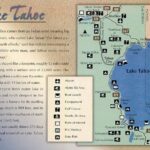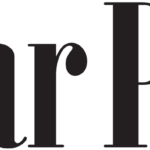Diversity and inclusion have become critical to creating dynamic, innovative, and thriving workplaces in today’s globalized world. Companies increasingly recognize the value of employing individuals from various cultural, ethnic, gender, and socio-economic backgrounds. To stand out in this evolving professional landscape, candidates must not only embrace diversity in their professional lives but also reflect their commitment to inclusion on their resumes. Here’s how to craft a resume that genuinely highlights your dedication to diversity and inclusion, making you a top contender for any role.
Understanding Diversity and Inclusion
Before diving into resume tips, it’s essential to define what diversity and inclusion mean in the workplace:
- Diversity refers to the presence of differences within a given setting. In the workplace, this includes differences in race, ethnicity, gender, age, religion, disability, and sexual orientation, as well as education and background.
- Inclusion is the practice of ensuring that individuals with diverse backgrounds feel respected, supported, and valued. It is about creating a work environment where everyone has the opportunity to contribute fully and thrive.
Why Companies Value Diversity and Inclusion
Organizations with diverse workforces benefit from various perspectives, which enhances creativity, problem-solving, and decision-making. Studies consistently show that companies with strong diversity and inclusion strategies outperform their competitors. As businesses expand globally, the need for culturally aware and inclusive employees becomes crucial for maintaining a competitive edge.
How to Highlight Inclusion on Your Resume
Emphasizing your commitment to diversity and inclusion on your resume can set you apart from other candidates. Here’s how you can do it:
1. Incorporate Relevant Keywords
Many companies use Applicant Tracking Systems (ATS) to scan resumes for keywords. Including terms like “diversity,” “inclusion,” “cultural competency,” and “equity” can help ensure your resume passes the initial screening process. However, it’s vital to use these terms authentically. Ensure that your experience aligns with the values you’re expressing.
For example:
- Experience: “Led diversity training workshops to enhance cultural competency across teams.”
- Skills: “Expert in implementing inclusive hiring practices and fostering diverse team environments.”
2. Highlight Inclusive Leadership and Teamwork
If you’ve worked in environments where inclusion was emphasized, reflect this in your job descriptions. Employers value individuals who actively contribute to building inclusive teams, lead with empathy, and embrace differences.
Example:
- Leadership Role: “Managed a cross-functional team, prioritizing the inclusion of diverse perspectives to drive innovation and increase team collaboration by 25%.”
- Teamwork: “Collaborated with colleagues from diverse backgrounds to launch a global marketing campaign, resulting in a 15% increase in customer engagement across multiple regions.”
3. Demonstrate Cultural Competence
Cultural competence refers to the ability to interact effectively with people from different cultures. If you’ve worked in international environments, navigated cross-cultural challenges, or participated in global projects, be sure to highlight these experiences on your resume.
Example:
- “Facilitated partnerships with international teams, ensuring culturally sensitive communication and collaboration across regions.”
- “Developed marketing strategies tailored to diverse audiences, increasing market penetration in Asia by 30%.”
4. Showcase Participation in Diversity Initiatives
Involvement in diversity-related activities, whether in a professional or volunteer capacity, reflects your proactive stance on inclusion. If you’ve spearheaded or participated in programs aimed at fostering inclusivity, make sure to include them on your resume.
Example:
- “Co-chaired the company’s Diversity and Inclusion Committee, resulting in the implementation of an equitable hiring process and a 20% increase in underrepresented group hires.”
- “Volunteered as a mentor for a community program focused on empowering women in STEM fields.”
5. Education and Certifications
Some roles may require formal education
or certifications related to diversity and inclusion. If you have undergone training, taken courses, or received certifications that reflect your understanding and commitment to these principles, include them in your resume.
Examples of certifications and courses to highlight:
- “Certified Diversity Professional (CDP)”
- “Inclusive Leadership Training from LinkedIn Learning”
- “Certificate in Cross-Cultural Communication from [University Name]”
- “Completed ‘Unconscious Bias in the Workplace’ training”
Adding these credentials demonstrates that you have a proactive approach to learning and applying inclusive practices.
6. Volunteer Work and Advocacy
Employers value candidates who contribute to diversity and inclusion not only within their professional roles but also in their communities. If you have volunteer experience that aligns with these values, highlight it under a dedicated section on your resume.
Example:
- Volunteer Work: “Organized local community events promoting social inclusion for marginalized groups, including LGBTQ+ advocacy programs.”
- Advocacy: “Volunteered at a non-profit organization focused on supporting refugee employment integration in the local community.”
These experiences show that you practice what you preach and extend your commitment to diversity beyond the workplace.
7. Tailor Your Resume to the Company’s Inclusion Values
Research the company’s diversity and inclusion policies before submitting your resume. Many organizations publish their diversity goals and accomplishments on their websites. Tailor your resume to align with the company’s values, using examples from your experience that match their focus.
For instance, if a company prioritizes gender diversity, and you’ve worked on initiatives that promoted gender equity in the workplace, highlight those efforts. Aligning your resume with the company’s values shows that you’ve done your homework and are serious about contributing to their mission.
8. Quantify Your Impact
When possible, quantify the impact of your diversity and inclusion efforts. Numbers provide concrete evidence of your contributions and lend credibility to your experience. Use data to back up your claims, whether it’s the increase in diverse hires, improvement in employee engagement, or successful implementation of inclusive initiatives.
Example:
- “Implemented diversity recruitment strategies that increased the representation of underrepresented minorities by 15% in one year.”
- “Spearheaded an employee resource group, improving team engagement scores by 20% through inclusive programming.”
9. Incorporate Inclusive Language
Ensure your resume uses inclusive language that reflects your sensitivity to diversity. Avoid jargon or terms that could be exclusive or discriminatory. When describing your experiences, focus on language that is respectful and acknowledges the diverse environments in which you’ve worked.
For example, instead of saying “manpower,” use “workforce.” Rather than “chairman,” use “chairperson” or “chair.”
Final Thoughts: Reflecting Authenticity in Your Resume
While highlighting diversity and inclusion on your resume is crucial in today’s job market, it’s equally important to ensure that your claims are genuine. Employers will seek out candidates who not only talk the talk but also walk the walk. Therefore, be prepared to discuss the specifics of your experience during interviews, offering real-world examples of how you’ve promoted diversity and inclusion in the workplace.







